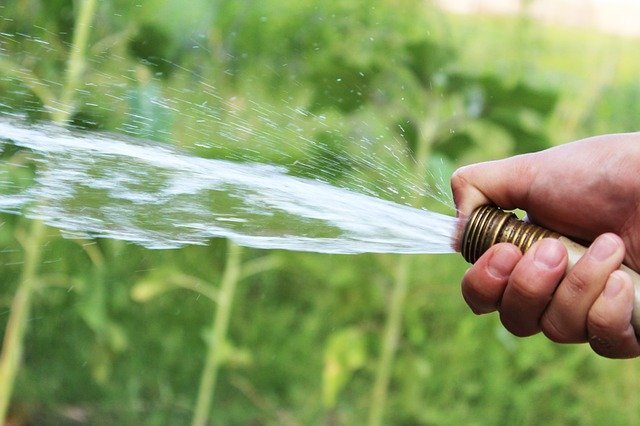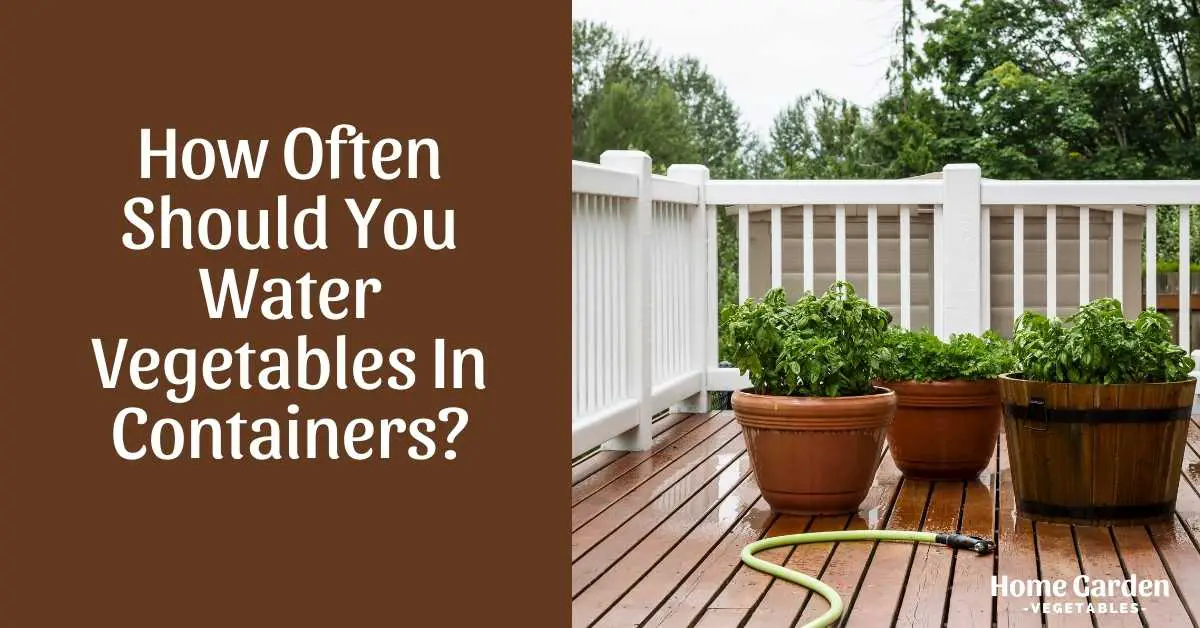Watering your plants correctly is one of the most difficult gardening tasks, but it is critical to their health. Usually, gardeners are worried about their plants being under-watered, the truth is that it’s just as easy to over-water and drown your plants. The answer to the question of how often to water container vegetables is really important.
When watering your vegetable garden it’s important to both never under-water or over-water. I am often asked how often should you water vegetables in containers? Many people make the mistake of waiting until crops look like they need watering or watering them constantly. Let’s go over all of this to make sure you are watering your vegetable containers correctly. Vegetables do need more water than regular plants growing in pots or containers.
Reader Poll: What online courses would interest you?
Vegetables growing in containers will dry out faster than if they were growing in the ground. Gravity is working all the time to pull the water out of the pot both from the bottom and sides of the container through evaporation. There are a lot of things you can do to slow this down and one of the key things is watering often enough.

Best Time Of Day To Water Vegetables In Containers?
The best time of day to water vegetables in containers is early morning so that the water can fully soak into the container. This keeps most of the water available throughout the hottest part of the day. Depending on the size of the pot you can check them of an evening and if the pot is very dry it’s worth watering overnight especially during the hot summers.
How Much Water Per Container?
This will vary and depend for example there are plants like cucumbers and courgettes that need a lot of water and others like tomatoes that will need less. This is the approach I take on container watering.
Subscribe to our newsletter!
- Water slow but steady directly onto the soil of the container
- don’t let the water spill over the pot
- wait until you see water coming out of the bottom of the pot
- stop watering
- carry on watering the rest of the pots
- come back to do a second watering topping up each pot once the first water has soaked in
look out for signs that you plants are under-watered, this is an indicator that you need to water them more:
- wilted leaves
- constantly dry soil
signs of over-watering:
- mildew/mold on the soil
- yellow wilted leaves
How Often To Water Vegetables In Containers?
This will vary on a number of factors including;
- The Weather
- Where the container is positioned
- Greenhouse Vegetable Plants
- When it was last watered
Start with once a day, especially during warm dry weather. Look for signs of under watering and adjust your watering strategy. It’s very unlikely you will need to water more than once per day.
Strategies to Retain Water In Containers?
Use the following strategies and tips to help retain water in your containers:
- Mulch the top of the pots with grass clippings or bark – This will help prevent water from evaporating
- Leave plenty of space between the soil and the top of the container – This will allow more water into the plant without overflowing
- Use a water bottle drip feeder to constantly and slowly release water into the soil
- Use a fixed funnel to water deeper into the roots
- Incorporate water crystals into the soil that retain water
- Use a slow draining compost suited for containers to retain water
How To Rescue A Dried Out Vegetable Potted Plant
When you find what looks like a dead/wilted plant that almost looks cooked to a crisp don’t worry it might be possible to rescue it. Fill a container with water that’s bigger than your planted container. Carefully lower your vegetable container into the bucket. Top up with water to the plan is fully submerged and soak overnight.
Carry on watering as usual and see if the plants growth returns.
Tips to Water Your Plants
- The majority of plants require consistent hydration. However, allowing the plants to dry out little before watering encourages root development.
- It’s important to remember that the roots, not the foliage, require water. Wetting the leaves is a waste of water and can help the disease spread.
- It’s best to water with a watering can with a tiny spout, allowing the water to flow out gradually so the potting mix isn’t disturbed. Then, carefully move the spout around the potting mix, visiting all regions – from the center of the pot to the outside edges – as you go.
- Water evaporates less when you water cooled soil in the evening or at night than when you water heated soil during the day. And the plants will be able to replenish their water supplies before the next day’s heat.
- Water as little as feasible and as much as is required. An autonomous irrigation system with a moisture sensor – in the bed, on the balcony, and on the grass – makes this easier.
- As we water our plants, the potting mix will settle over time. This crushes all of the mix’s vital air pockets, preventing roots from getting enough oxygen from the outside air. All you’ll need is a skewer or chopstick. Gently poke a few holes in the earth surrounding the plant every third or fourth watering, as far down as you can.
- Waterlogging prevents the roots from inhaling oxygen from the soil, causing the root cells to drown. Therefore, avoid it.
Signs That Your Vegetable Plants Are in Need of Water
One of the most crucial aspects of keeping your vegetable plants healthy is to water them properly. Whether they’re a forgetful under-waterer or an over-enthusiastic over-waterer, here is where many people go wrong with plant care!
Here are some indicators that your plants want water:
- One of the most common causes of poor plant health is inappropriate watering, which is generally the result of neglect. You can see tiny changes like withering leaves by checking your plants every day or two. It is significantly more effective than a predetermined watering regimen if your plant is drying out.

